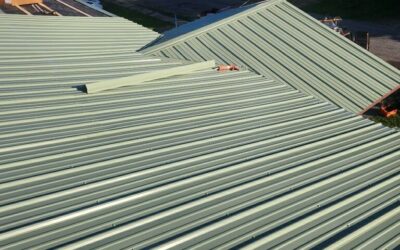What Is a Composition Roof? A Comprehensive Guide to Understanding Composition Roofing
When it comes to roofing options, homeowners are often faced with a variety of choices. From traditional materials like wood and slate to more modern options like metal and rubber, the options can be overwhelming. However, one roofing material that has become increasingly popular over the years is composition roofing. Known for its durability, affordability, and versatility, composition roofing has become a favorite for homeowners looking for a long-lasting roof that can withstand the elements.
In this blog, we’ll explore what a composition roof is, the three main types of composition roofs, and why it might be the right choice for your home. As a leading contractor in roofing services, S&K Construction and Remodeling LLC has extensive experience with composition roofs and works with homeowners to ensure the best results. Let’s dive into the details of what a composition roof is and why it’s a smart investment.
What Is a Composition Roof?
A composition roof, often referred to as asphalt shingle roofing or composition shingle roofing, is a popular type of roofing material made from a combination of organic and synthetic materials. The primary component of composition roofing is typically asphalt, which is combined with other materials such as fiberglass, minerals, and various additives. The result is a strong, durable, and cost-effective roofing system that has become a go-to choice for many homeowners.
Composition roofing is primarily used for residential homes, but it can also be used for certain commercial applications. The material is designed to mimic the appearance of other roofing materials, such as wood shakes, slate, or tile, while providing enhanced durability and ease of installation. It’s available in a wide range of colors and styles, making it a versatile option for homeowners looking to enhance the curb appeal of their homes.
One of the key benefits of composition roofing is its affordability. It is generally much more cost-effective than other roofing materials like slate, wood, or metal. Additionally, it offers a high degree of protection against weather conditions, including wind, rain, and snow, making it an ideal choice for regions with varying climates.
The Three Main Types of Composition Roofs
Composition roofs are available in several different varieties, but the three most common types are asphalt shingles, fiberglass shingles, and organic shingles. Each of these types has distinct characteristics, benefits, and drawbacks. Let’s explore each one in detail:
1. Asphalt Shingles
Asphalt shingles are the most common type of composition roofing material, accounting for more than 70% of all residential roofing installations in the United States. These shingles are made from a fiberglass base or mat that is coated with asphalt and topped with a layer of mineral granules. Asphalt shingles are known for their affordability, ease of installation, and durability.
Benefits of Asphalt Shingles:
- Affordability: Asphalt shingles are among the most affordable roofing materials available. This makes them an attractive option for homeowners on a budget.
- Durability: When properly installed, asphalt shingles can last between 20 to 30 years, depending on the quality and the manufacturer.
- Variety: Asphalt shingles come in a wide range of colors, styles, and designs, making it easy to match the aesthetics of your home.
- Easy Installation: Asphalt shingles are lightweight and easy to install, which helps reduce labor costs and installation time.
Drawbacks of Asphalt Shingles:
- Susceptible to Wind Damage: While asphalt shingles are durable, they can be prone to wind damage, particularly in regions that experience frequent storms or high winds.
- Not as Energy Efficient: Asphalt shingles do not offer the same energy efficiency as other materials like metal or tile. Homeowners may see higher energy bills as a result of poor insulation.
- Shorter Lifespan: While they can last up to 30 years, asphalt shingles tend to have a shorter lifespan compared to more premium materials like metal or slate.
2. Fiberglass Shingles
Fiberglass shingles are a modern variation of asphalt shingles that use a fiberglass mat as the base instead of organic materials. These shingles are coated with asphalt and topped with mineral granules, just like traditional asphalt shingles. However, the fiberglass mat provides enhanced strength, durability, and fire resistance.
Benefits of Fiberglass Shingles:
- Fire Resistance: One of the key advantages of fiberglass shingles is their fire-resistant properties. Fiberglass is less flammable than organic shingles, making them a safer option for homeowners in fire-prone areas.
- Lightweight: Fiberglass shingles are lighter than organic shingles, which makes them easier to handle and install. This can help reduce installation costs.
- Longer Lifespan: Fiberglass shingles tend to have a longer lifespan than organic shingles, with many lasting between 30 to 50 years when properly maintained.
- Better Wind Resistance: Due to their lightweight construction, fiberglass shingles are often more resistant to wind damage compared to traditional asphalt shingles.
Drawbacks of Fiberglass Shingles:
- Higher Upfront Cost: While fiberglass shingles are more durable than organic shingles, they typically come with a higher upfront cost. However, this cost can be offset by their longer lifespan and reduced maintenance needs.
- Potential for Cracking: While fiberglass shingles are generally more durable, they can be more prone to cracking if they are subjected to extreme weather conditions, such as hailstorms or heavy snowfall.
3. Organic Shingles
Organic shingles are the original type of asphalt shingles. They are made from a base of cellulose fibers (usually paper or wood fibers) that are impregnated with asphalt and coated with mineral granules. While organic shingles are still available, they are less common today due to their higher susceptibility to moisture and mildew.
Benefits of Organic Shingles:
- Flexibility: Organic shingles tend to be more flexible than fiberglass shingles, which makes them less likely to crack during installation or in colder weather.
- Better Insulation: Organic shingles tend to offer better insulation properties compared to fiberglass, helping to keep your home warmer in the winter and cooler in the summer.
Drawbacks of Organic Shingles:
- Prone to Moisture Damage: Organic shingles are more vulnerable to moisture and mildew, which can lead to rot and premature degradation. As a result, these shingles tend to have a shorter lifespan.
- Heavier: Organic shingles are heavier than fiberglass shingles, which makes them more difficult to handle and install. This can increase labor costs and make the installation process more time-consuming.
- Less Energy Efficient: Organic shingles are not as energy-efficient as fiberglass or metal roofing materials, meaning homeowners may see higher heating and cooling costs.
Why Choose a Composition Roof?
Now that we’ve covered the three main types of composition roofing materials, let’s look at why a composition roof might be the right choice for your home. There are several compelling reasons to consider installing a composition roof, including affordability, versatility, and low maintenance. Let’s explore the benefits in more detail.
1. Affordability
One of the main reasons homeowners choose composition roofing is its cost-effectiveness. Compared to other roofing materials like slate, tile, or metal, composition shingles are much more affordable. They provide a durable roofing option at a fraction of the cost, making them a popular choice for homeowners on a budget.
The overall cost of installing a composition roof can vary depending on the type of shingles chosen, the size of the roof, and the complexity of the installation. However, composition roofs typically cost between $3 to $7 per square foot, which is much lower than materials like metal, tile, or slate.
2. Durability and Long-Lasting Protection
Composition roofs, particularly those made from fiberglass or high-quality asphalt shingles, offer excellent durability. These roofs can withstand various weather conditions, including heavy rain, snow, and moderate winds. With proper maintenance, a composition roof can last for 20 to 50 years, depending on the type of shingles used.
Many composition shingles come with warranties that can last up to 50 years, giving homeowners peace of mind knowing that their roof is protected for decades.
3. Low Maintenance
Composition roofs are generally low-maintenance compared to other roofing materials. They require occasional cleaning to remove debris, and homeowners should inspect the roof periodically for signs of damage, such as cracked shingles or leaks. However, composition shingles are relatively easy to maintain, and repairs are usually simple and affordable.
Additionally, composition roofs don’t require the same level of upkeep as more high-maintenance materials like wood shakes, which need to be treated regularly to prevent rot and pests.
4. Aesthetic Variety
Composition shingles come in a wide variety of colors, textures, and styles, allowing homeowners to choose a look that complements the design of their home. Whether you prefer the appearance of wood shakes, slate, or tile, composition roofing materials can mimic these looks while providing the durability and affordability of asphalt.
This wide range of aesthetic options allows homeowners to customize the appearance of their roof, enhancing curb appeal and increasing the overall value of the property.
Why Choose S&K Construction and Remodeling LLC?
At S&K Construction and Remodeling LLC, we specialize in installing and repairing composition roofs for homeowners in the Youngstown, Ohio, area and beyond. Our team of experienced roofing professionals understands the unique needs of each home, and we work closely with our clients to ensure that their roof is installed correctly and efficiently.
We also work with high-quality roofing materials, including VELUX skylights and premium composition shingles, to ensure that your home is protected with the best materials available. Whether you’re interested in installing a new composition roof or need repairs on your existing one, our team is here to help.
Conclusion
A composition roof is a versatile, affordable, and durable roofing option that can enhance the appearance of your home while providing long-lasting protection. With three main types—asphalt shingles, fiberglass shingles, and organic shingles—composition roofing offers a variety of choices to suit different needs and budgets. Whether you’re looking for a low-maintenance, cost-effective roofing solution or seeking a roof that can withstand the elements, composition shingles are a great choice.
At S&K Construction and Remodeling LLC, we specialize in composition roof installations and repairs, ensuring that your home stays protected for years to come. If you’re considering installing a composition roof or need expert guidance on roofing materials, don’t hesitate to contact us today for a consultation.
 (440) 307-2060
(440) 307-2060


